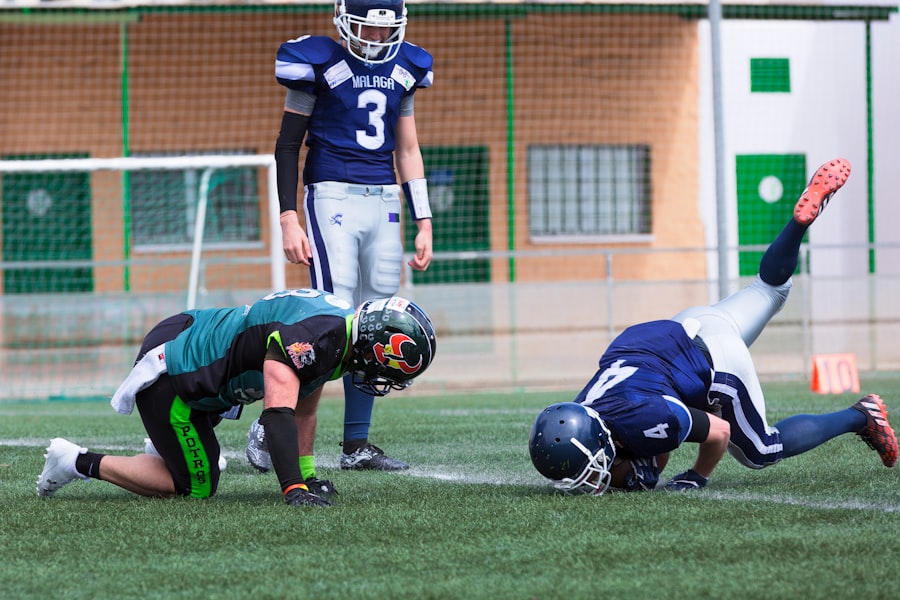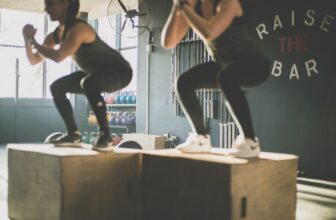The initial point that commonly comes to mind is raw skill or ability when you think about athletic performance. However, proper conditioning is the foundation that sustains these attributes. Conditioning is not merely regarding developing endurance; it encompasses an alternative method to preparing your body for the demands of your sporting activity.
It involves establishing strength, versatility, agility, and cardio physical fitness, every one of which are vital for optimal efficiency. Without ample conditioning, also one of the most talented professional athletes can discover themselves having a hard time to keep up with their rivals. Appropriate conditioning also plays a considerable duty in injury prevention.
When your body is well-conditioned, it can much better endure the physical tensions of training and competitors. Muscle mass, tendons, and tendons that are flexible and strong are less most likely to experience stress or rips. This implies that investing time in conditioning not only enhances your efficiency however likewise lengthens your sports occupation.
You’ll locate that a well-conditioned body can recuperate faster from extreme exercises and competitors, permitting you to educate tougher and more frequently. Look into the current hair items at hair.
Key Takeaways
- Correct conditioning is vital for athletes to do at their best and minimize the danger of injury.Strength and conditioning play a vital duty in improving athletic efficiency and protecting against injuries.Nutrition has a considerable effect on sports performance, and correct fueling is important for ideal results.Rest and healing are crucial for taking full advantage of efficiency and stopping fatigue and overtraining.Mental training is
- crucial for athletes to develop focus, self-confidence, and strength in competitors.
- The Role of Strength and Conditioning in Athletic Training Stamina and conditioning are important elements of any kind of athletic training program. As a professional athlete, you need to create a strong
foundation of stamina to support your certain sport’s demands. This implies engaging in exercises that target the major muscle mass teams while likewise concentrating on functional movements that mimic the actions you do throughout competitors. For instance, if you’re a sprinter, integrating explosive motions like plyometrics can boost your speed and power on the track. Toughness training is not just about lifting hefty weights; it’s regarding comprehending exactly how to apply resistance
in a method that advantages your efficiency. You need to focus on building both outright stamina and family member toughness, which refers to just how strong you are in relationship to your body weight. This balance is important for athletes in sports that call for dexterity and quick motions. By incorporating toughness and conditioning into your training
routine, you’ll not only improve your physical abilities but likewise enhance your confidence as you see tangible lead to your efficiency. Nourishment and Its Impact on Athletic Performance< img src= "https://sunsethealthandfitness.com/wp-content/uploads/2025/06/abcdhe-3.jpg" id="3"design="max-width:100%; display screen: block; margin-left: car; margin-right: auto; size:70%;

“> Nutrition is commonly a forgotten facet of athletic training, yet it plays a pivotal function in identifying your efficiency degrees. As an athlete, what you eat directly affects your energy degrees, recuperation times, and general wellness. A well-balanced diet plan abundant in carbs, healthy proteins, fats, minerals, and vitamins provides the gas required for intense training sessions and competitors.
You need to recognize that food is not simply nourishment; it’s a crucial component of your training approach. Hydration is one more crucial component of nourishment that can not be ignored. Dehydration can lead to reduced efficiency, exhaustion, and even serious health concerns.
You ought to make it a behavior to monitor your liquid consumption previously, during, and after workout. Furthermore, timing your meals around your training schedule can optimize your energy levels. Taking in the ideal nutrients at the correct times can improve your efficiency and speed up recovery, allowing you to train more difficult and better.
The Role of Rest and Recovery in Maximizing Performance
Rest and Recovery Metrics Description Hours of Sleep The number of hours of sleep per night, which is necessary for physical and psychological healing.
Rest Days The regularity of day of rest in a training program, enabling the body to adjust and recuperate to the stress of exercise. < td design="extra padding: 12px; text-align: left; border-bottom: 1px solid #e 5e7eb; line-height:40 px;"> Heart Rate Variability (HRV) A measure of the variation in time intervals between heart beats, which can indicate the body’s preparedness for exercise. < td design="extra padding: 12px; text-align: left; border-bottom: 1px strong #e 5e7eb; line-height:40 px;"> Stress Levels< td style="padding: 12px; text-align: left; border-bottom: 1px solid #e
5e7eb; line-height:40 px;”> An analysis of anxiety levels, which can influence the body’s capability to recuperate and do optimally. Hydration Status The body’s hydration degrees, which are critical for healing and overall performance. While training tough is vital for enhancing athletic efficiency,
remainder and recovery are equally crucial. Your body requires time to fix itself after extreme exercises; this is when muscle mass development takes place and power stores are replenished. Ignoring the relevance of rest can lead to overtraining, which can lead to exhaustion, reduced performance, and even injury. You must prioritize day of rest in your training timetable to allow your body the time it needs to recuperate totally.Integrating energetic healing methods can likewise be useful. Activities such as light jogging, yoga, or swimming can promote blood flow to
sore muscle mass without placing additional pressure on them. In addition, practices like stretching and foam rolling can assist ease muscle mass rigidity and improve adaptability. By comprehending the relevance of rest and healing, you’ll be better geared up to optimize your efficiency and keep a sustainable training regimen. The Importance of Mental Training in Athletic Performance Psychological training is often an underappreciated element of athletic performance, yet it can be the distinction between success and failing. As a professional athlete, you deal with not just physical obstacles but also mental hurdles that can impact your performance. Establishing psychological durability through techniques such as
visualization, goal setting, and mindfulness can boost your focus and resilience throughout competitors. You require to cultivate a solid mindset that enables you to press with hardship and keep self-confidence in your capabilities. Visualization is specifically powerful; by psychologically practicing your efficiency before an event, you can produce a sense of experience that reduces anxiousness and improves self-confidence. Establishing certain, quantifiable goals assists you stay inspired and gives a clear roadmap for improvement.
In addition, practicing mindfulness techniques can aid you stay present during competitors, enabling you to concentrate on the job at hand rather than obtaining shed in diversions or self-doubt. By focusing on mental training together with physical preparation, you’ll be much better outfitted to perform at your ideal when it matters most.
Injury Prevention and Rehabilitation in Athletic Training

Injury prevention must be a leading concern for any kind of athlete aiming to preserve peak efficiency degrees. Understanding the usual injuries connected with your sport can assist you take proactive procedures to prevent them. This consists of incorporating appropriate warm-up routines, using ideal equipment, and listening to your body’s signals when something really feels off.
You need to also concentrate on enhancing the muscle mass around vulnerable joints to offer additional support during exercise. Efficient recovery is essential for a successful return to sport if an injury does happen. This process commonly includes working very closely with medical care specialists who specialize in sporting activities medicine or physical therapy.
They can guide you through customized rehabilitation exercises created to recover toughness and movement while minimizing the threat of re-injury. Bear in mind that rushing back right into competition ahead of time can lead to setbacks; persistence is key in ensuring a complete healing.
The Role of Technology in Enhancing Athletic Performance
In today’s electronic age, technology plays an increasingly considerable function in improving athletic performance. Wearable tools such as fitness trackers and smartwatches allow you to check various metrics like heart price, range took a trip, and calories melted during exercises. This information can offer valuable insights into your training patterns and assist you make notified decisions regarding changes required for renovation.
Advancements in video evaluation innovation make it possible for athletes and coaches to damage down efficiency auto mechanics with accuracy. By evaluating video of your technique, you can determine areas for enhancement that might not be apparent throughout online activity. Furthermore, virtual fact training programs are emerging as ingenious tools for mental prep work and skill development.
Embracing these technological developments can give you a competitive edge while likewise making training extra interesting and effective.
The Importance of Consistent and Individualized Training Programs
Consistency is essential when it pertains to attaining athletic goals; nevertheless, it’s just as important that your training program is customized to fulfill your private needs. Every athlete has unique staminas, weaknesses, and goals that need an individualized strategy for ideal outcomes. Dealing with a knowledgeable trainer or instructor can help you develop a program that aligns with your particular demands while guaranteeing that you remain regular in your efforts.
An individualized training program takes into account elements such as your sporting activity’s demands, current physical fitness level, injury background, and individual goals. This tailored approach allows for more effective training sessions that yield much better results over time. Furthermore, routine analyses can help track progress and make required adjustments to keep you on the course towards success.
By devoting to a customized and constant training routine, you’ll establish on your own up for long-term development and achievement in your athletic endeavors.Athletic training is
crucial for enhancing efficiency and protecting against injuries in athletes. One essential aspect of athletic training is constructing extra muscular tissue via contemporary training techniques. As talked about in the article “As You Build Extra Muscular Tissue through Modern Training”, integrating strength training exercises like making use of a rowing machine can significantly boost both cardio health and fitness and muscle mass stamina. Additionally, taking in supplements like BCAAs can assist in muscle mass growth and repair service, as discussed in the article “How Do BCAAs Aid in Muscle Growth and Repair”. By integrating proper training methods and dietary methods, professional athletes can optimize their performance and achieve their health and fitness goals.
< img src= "https://sunsethealthandfitness.com/wp-content/uploads/2025/06/abcdhe-3.jpg" id="3"design="max-width:100%; screen: block
; margin-left: automobile; margin-right: car; size:70%;

“> Nutrition is frequently an overlooked aspect of athletic training, yet it plays a crucial function in establishing your efficiency levels. By understanding the value of remainder and recovery, you’ll be much better geared up to optimize your performance and maintain a sustainable training program. Mental training is often an underappreciated element of athletic performance, yet it can be the distinction between success and failing. One vital facet of athletic training is developing extra muscular cells with modern training methods. By integrating appropriate training techniques and dietary techniques, athletes can optimize their performance and attain their fitness objectives.


